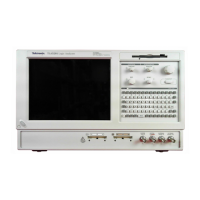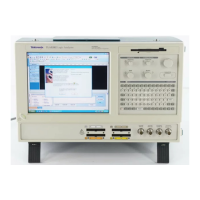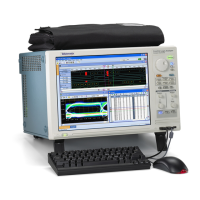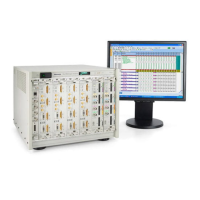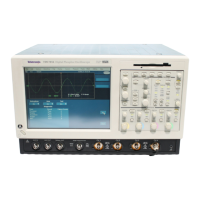Theory of operation
Thedynamicran
ge of P7700 Series probe tips is specified with a linearity error
limit of ±1%. As shown in the Linearity Error plot, the linearity error increases
as the input voltage increases above the dynamic range limit for both signal
polarities. The dynamic range is n ot a hard limit for signal distortion; probe tip
input voltages can slightly exceed the dynamic range limit if a slightly higher
linearity error is determined to be acceptable.
The dynamic range for P7700 Series probe tips is also specified as a maximum
peak-to-peak voltage. With the probe tip A and B offset voltages both set to
0 V, the dyn
amic range will be symmetrical around that 0 V level. In this case,
the dynamic range can be considered to equal ±(dynamic range ÷ 2). If the
oscilloscope vertical scale factor is set high enough to display the full dynamic
range, the oscilloscope will momentarily add dynamic range limit annunciation
lines. These dynamic range annunciation lines can be refreshed by adjusting one
of the vertical channel knobs, such as position or scale factor.
The differential input mode dynamic range is specified to be almost twice as l arge
as the single-ended signal dynamic range; but this is true only for complementary
AandBi
nput signals. The single-ended A and B dynamic range limits still apply,
even for the case of a maximum differential m ode input signal.
P7700 Series TriMode Probes Technical Reference 17

